I did this one because I thought it was Denmark’s first curtain wall, designed by Arne Jacobsen.
…lol, nope—that is Nyropsgade 18, next door. This is Nyropsgade…14, designed a few years later by the significantly-less-famous August Rasmussen & Torben Miland Petersen and completed in 1958.
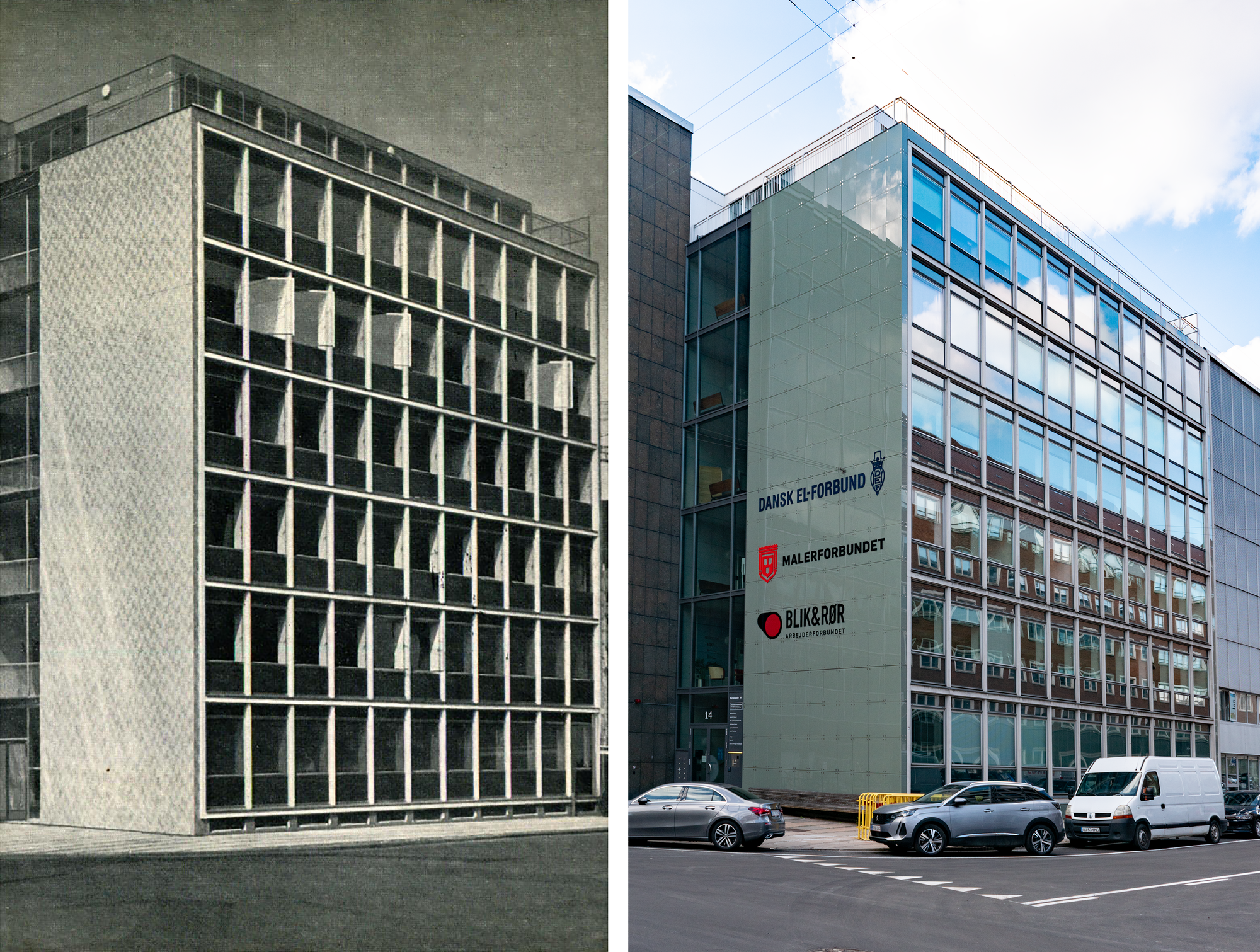
Ah well, it’s still a clean example of Danish modernism. Built for the textile workers union, it’s still home to Danish unions today. Owned by 3F–the United Federation of Workers of Denmark–the Danish electricians, painters, and tin and plumbers unions moved their offices here in 2015.
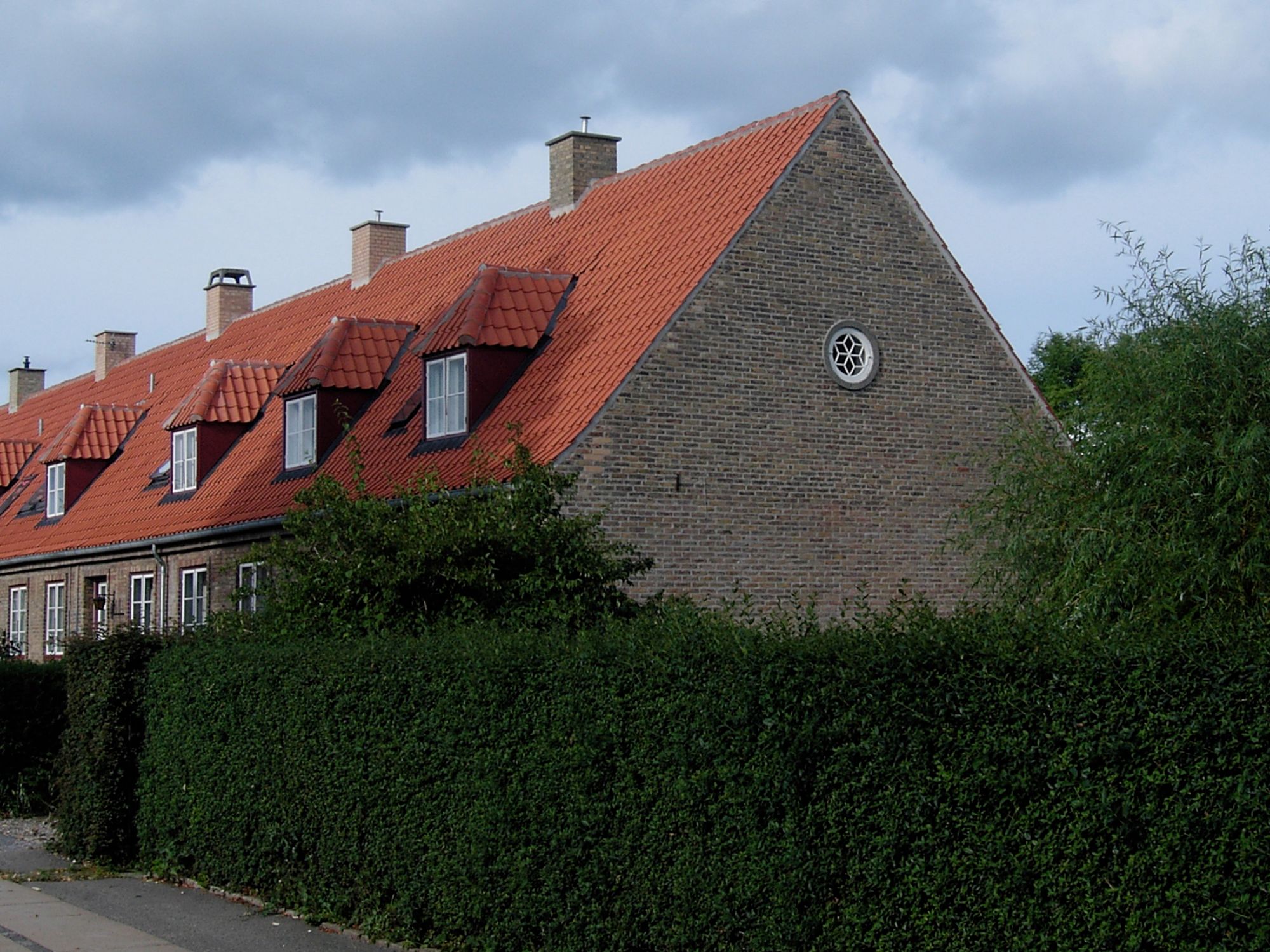
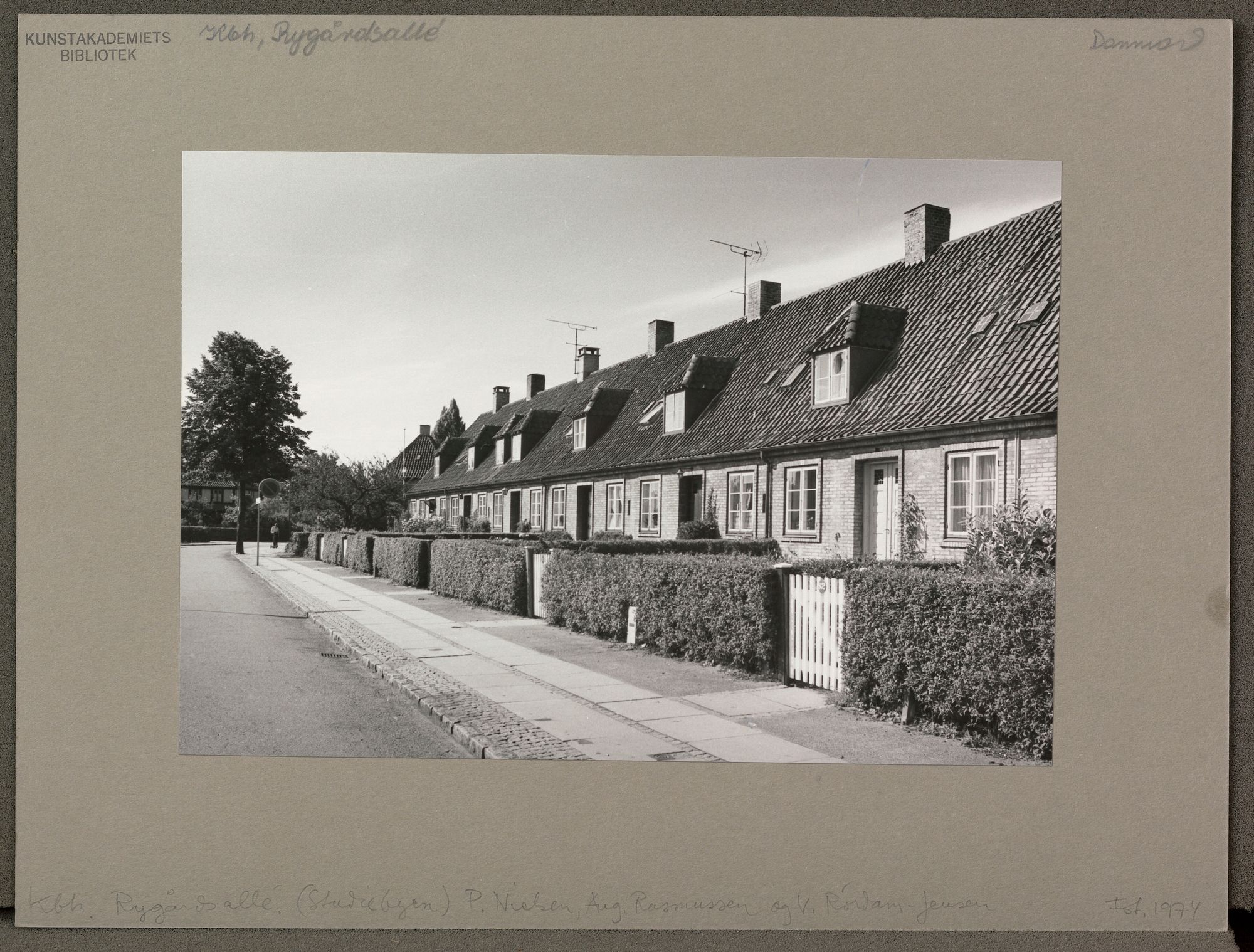
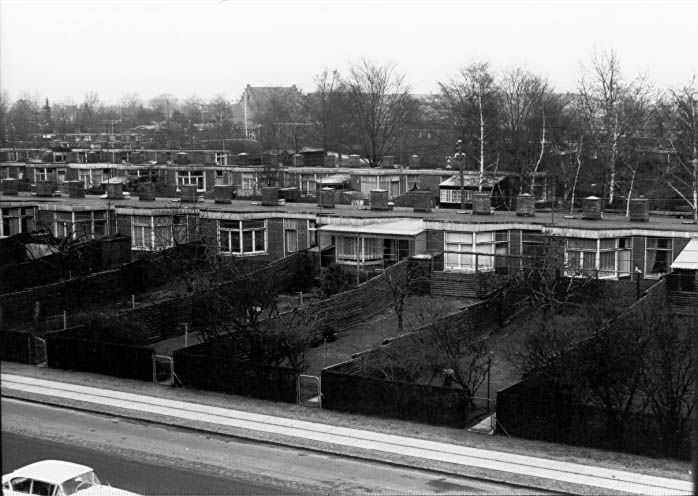
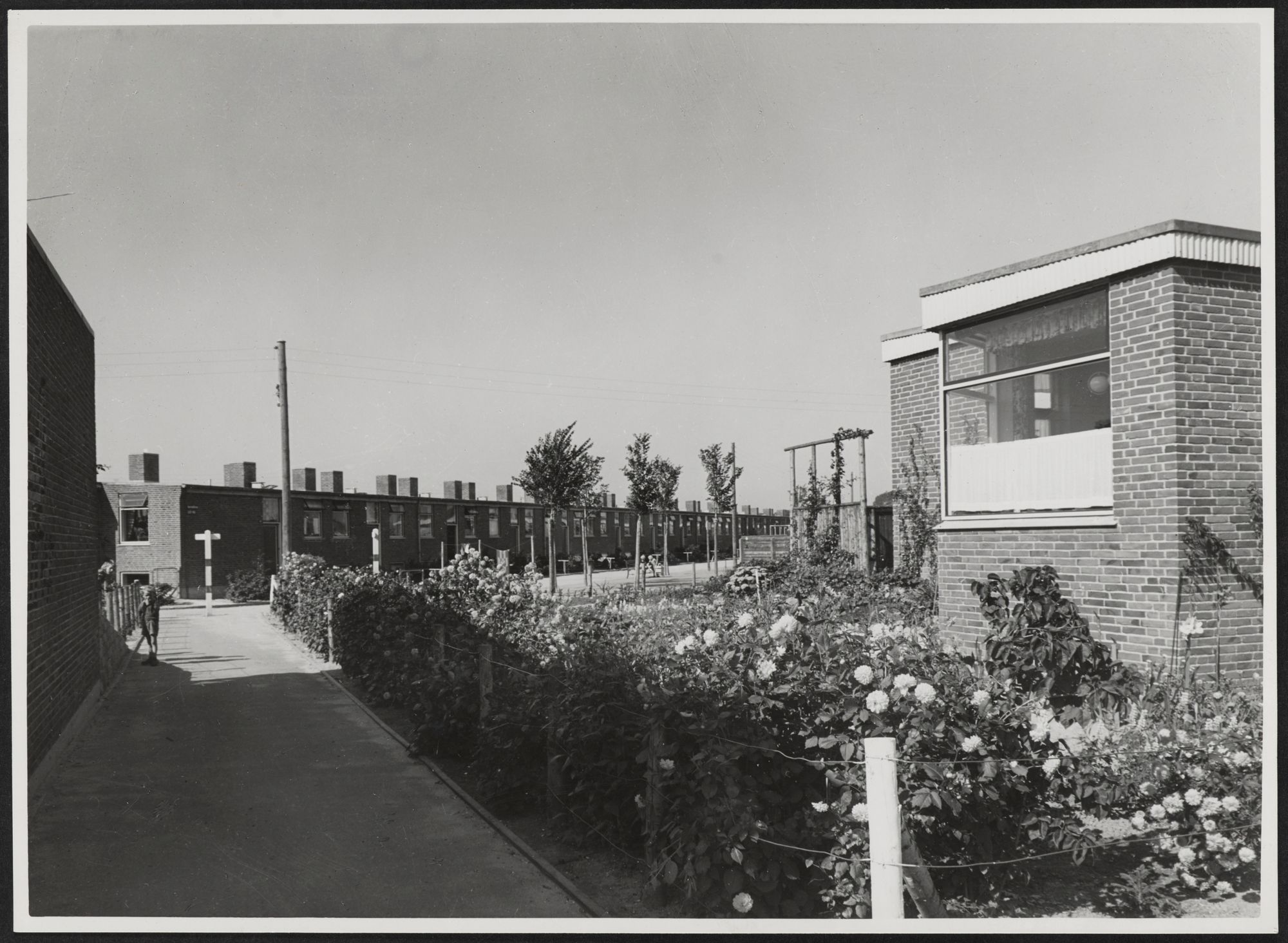
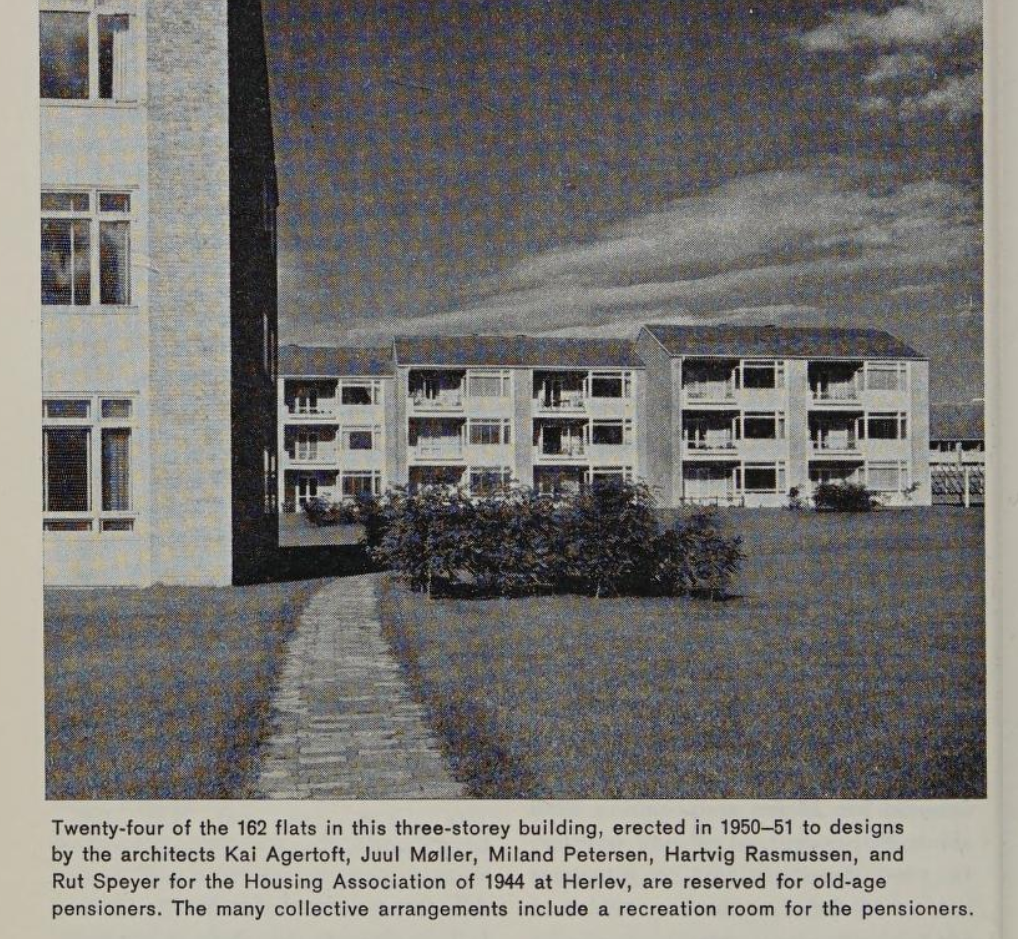
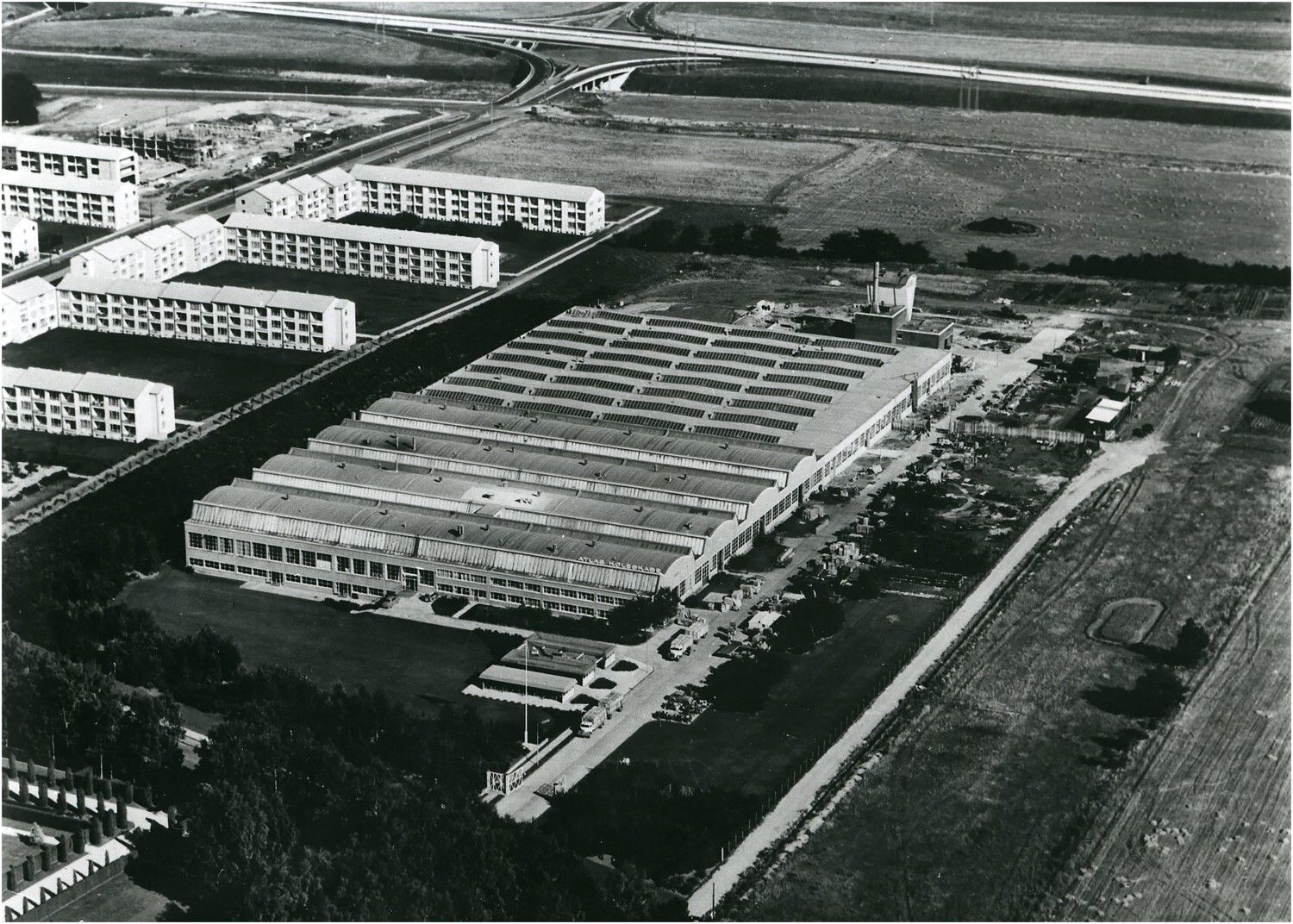
Architects August Rasmussen and Torben Miland Petersen were pretty obscure. As far as I can tell, they're most notable for designing early modernist housing on Zealand in the 1940s. Rasmussen worked on the rowhouses at Studiebyen in Hellerup and Andelsboligforeningen af 1941 in Ringsted.
What I could dig up on Miland Petersen was a little more interesting–Denmark had a socialist design studio in the 1930s and 1940s, Kooperative Arkitekter, focused on social housing. Miland Petersen was a member, and in that vein, he worked on social projects like the Hønsehusene rowhouses in Vigerslev and Kilometergården in Herlev. In the 1940s, Miland Petersen was also the fifth wheel on team that designe a prizewinning refrigerator factory, working with husband-and-wife architect duos Eigil Hartvig Rasmussen and Rut Speyer and Gunnar and Bodil Krohn. Unfortunately, the Atlas refrigerator factory in Lundtofte has since been demolished.
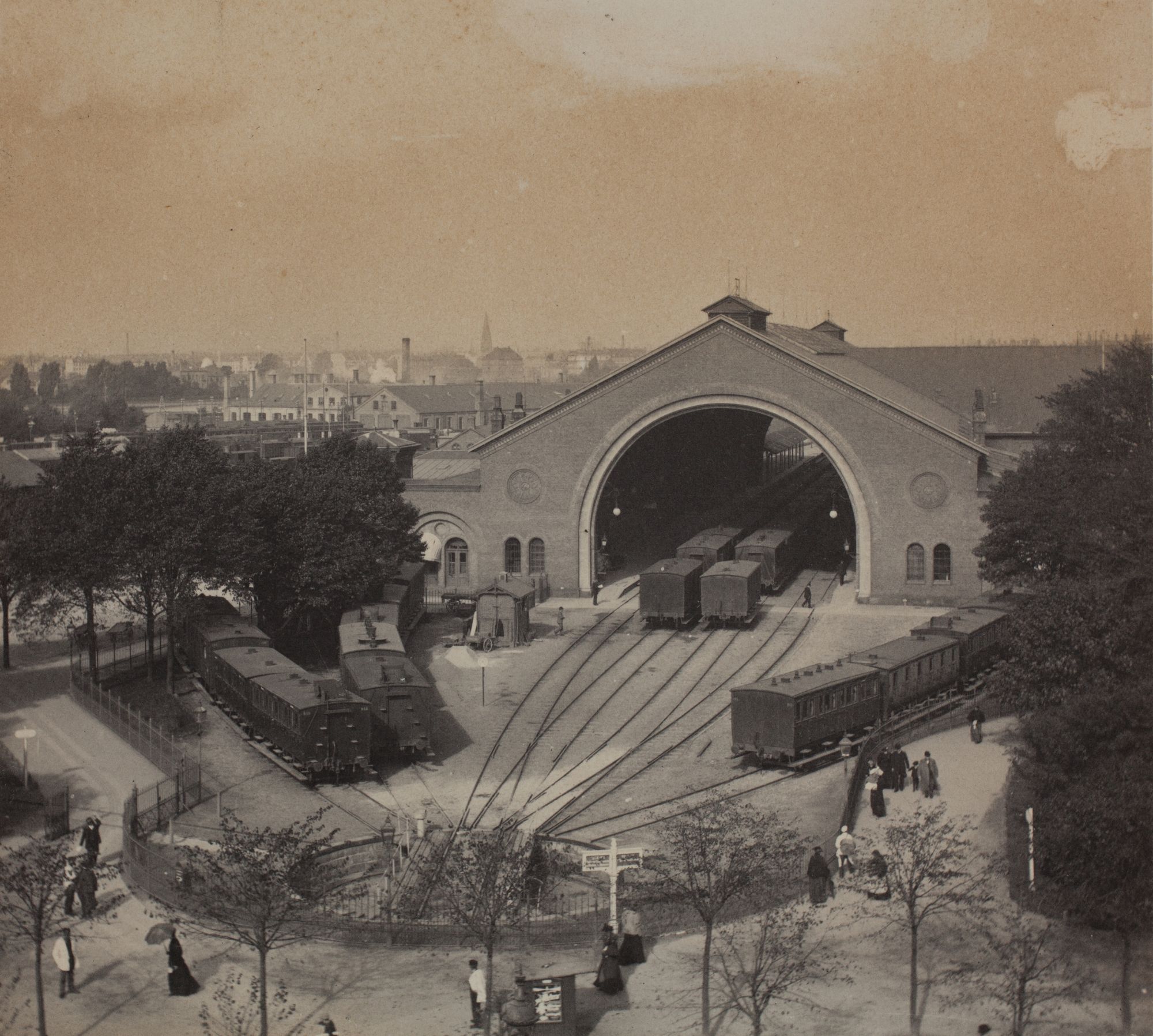
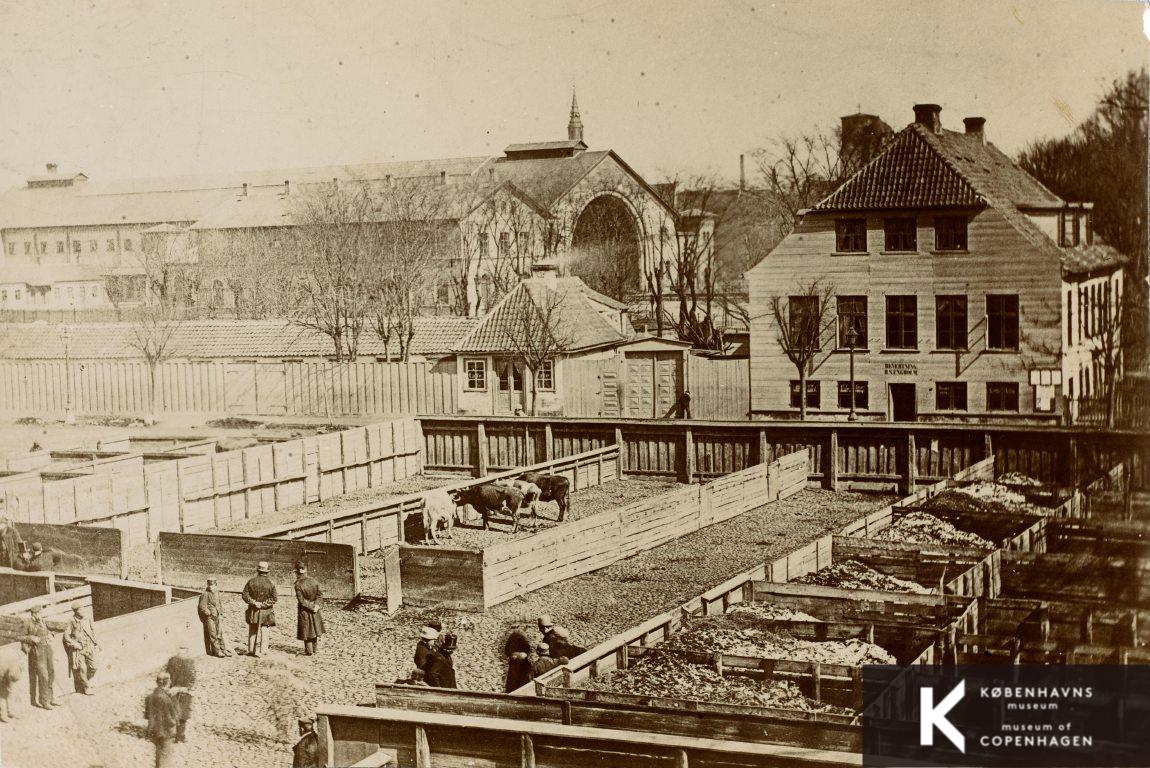
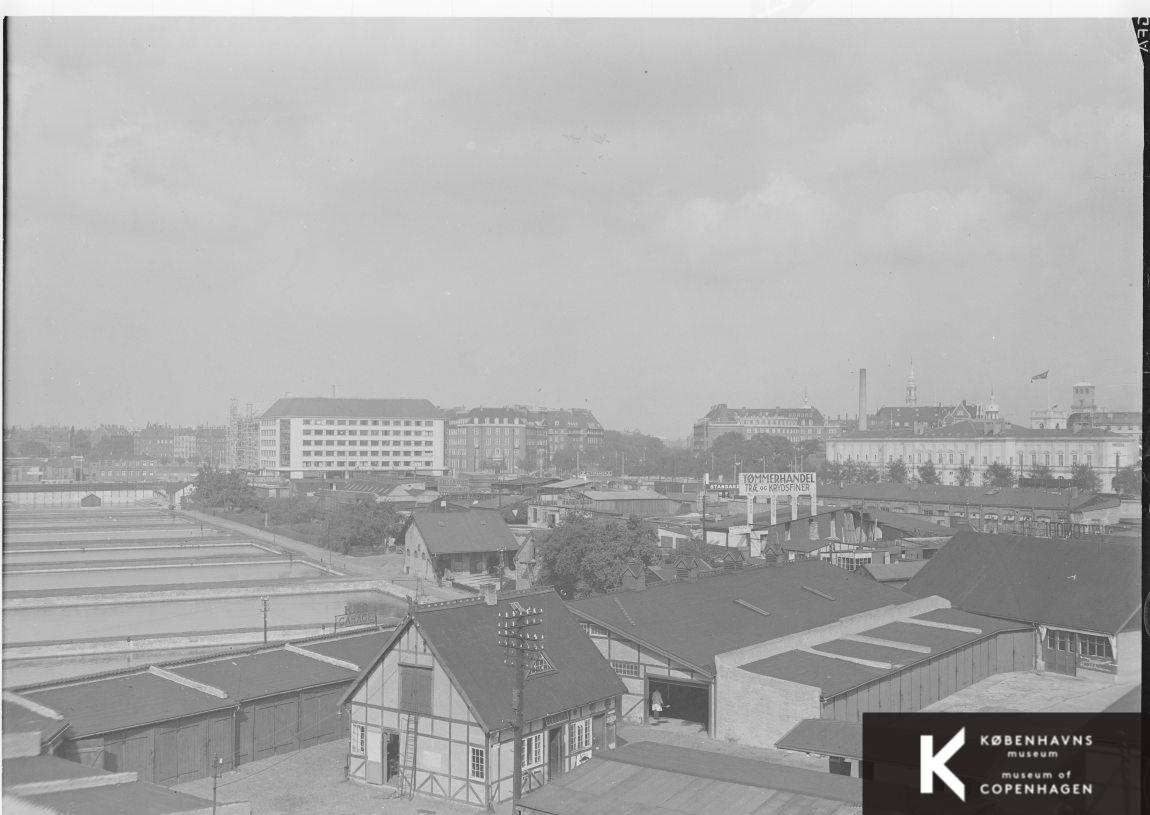
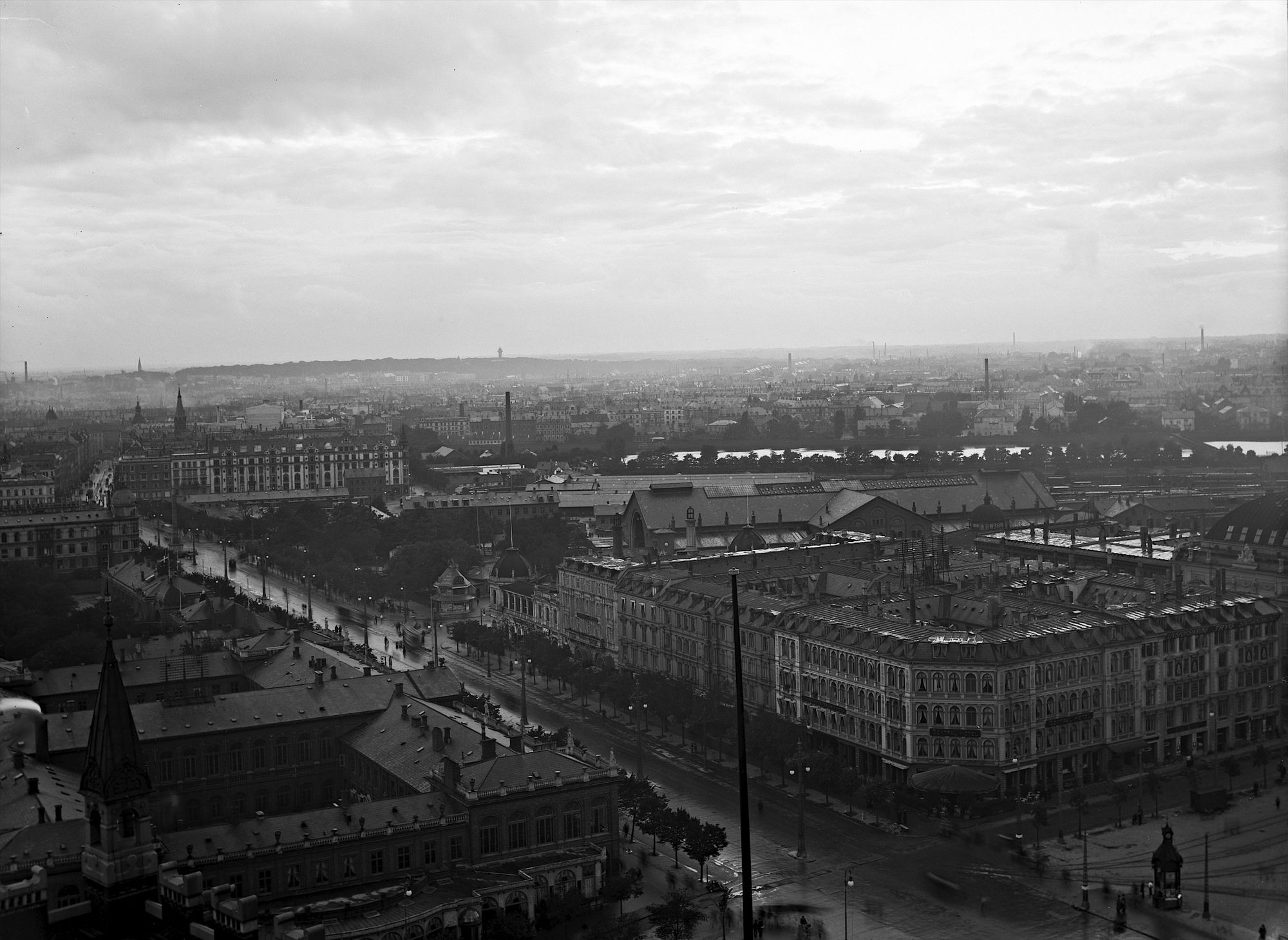
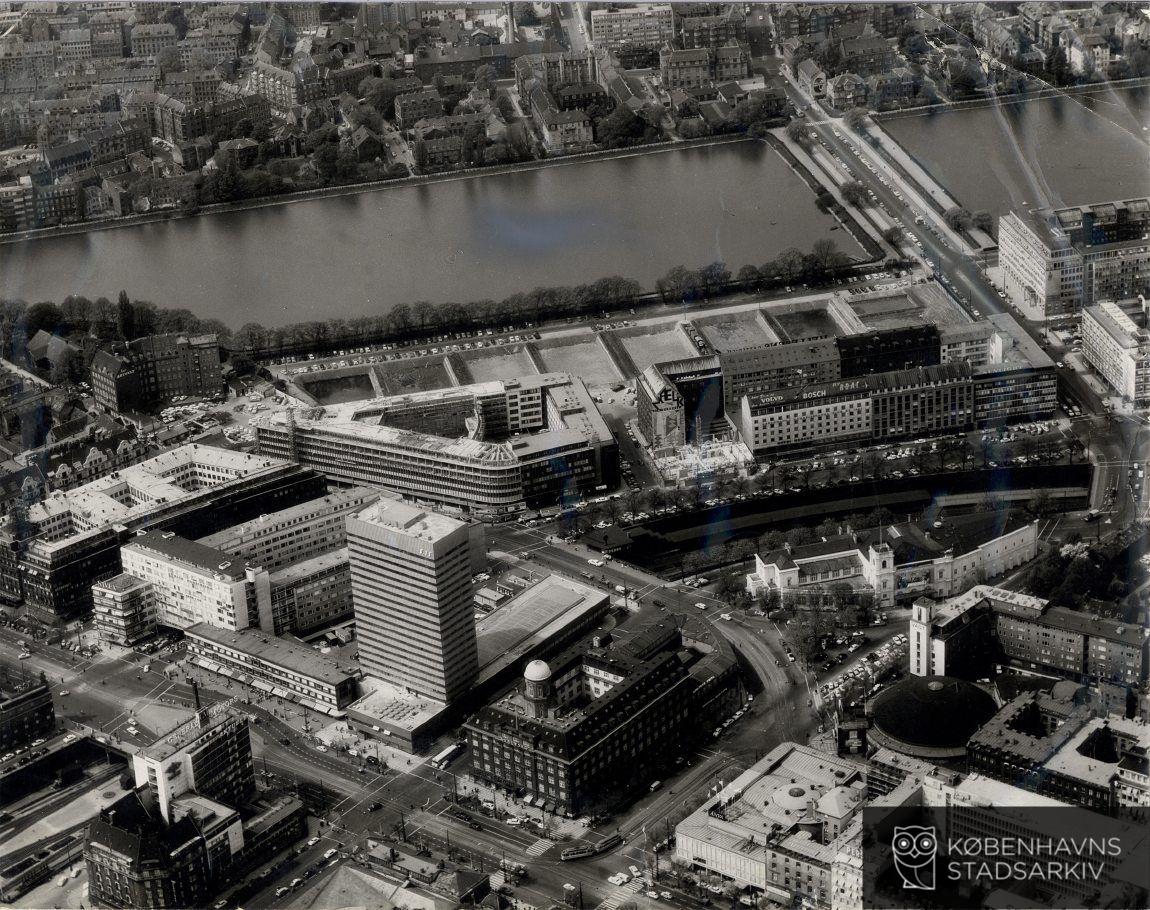
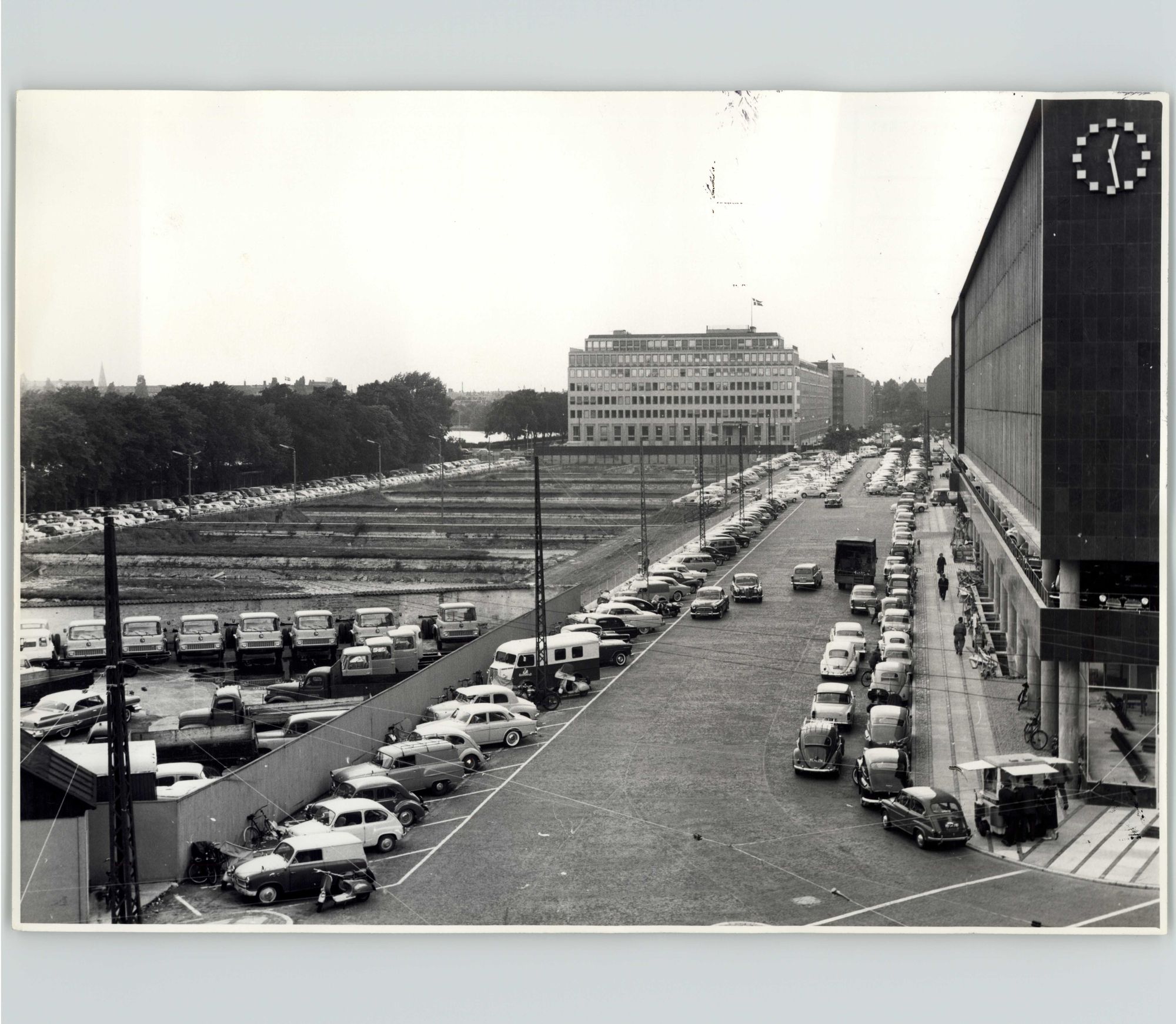
This section of Copenhagen was a bit of a wasteland–it was stuck between the fumes and clamor of the city’s second central train station and the water filtration basins next to Sankt Jørgens Sø. Plans for the area around Nyropsgade were finalized in 1928, but development didn’t really kick into gear until after the Second World War.
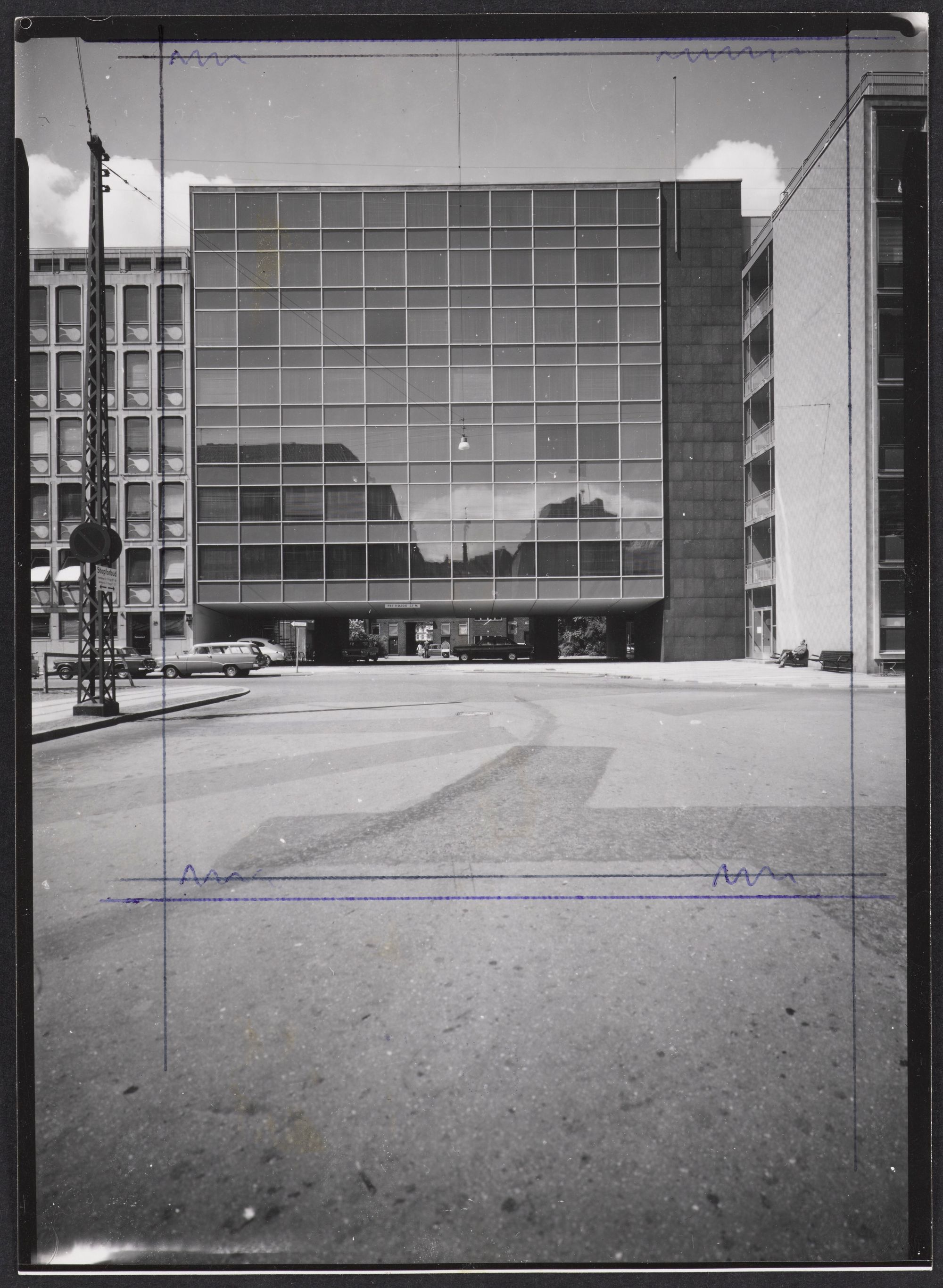
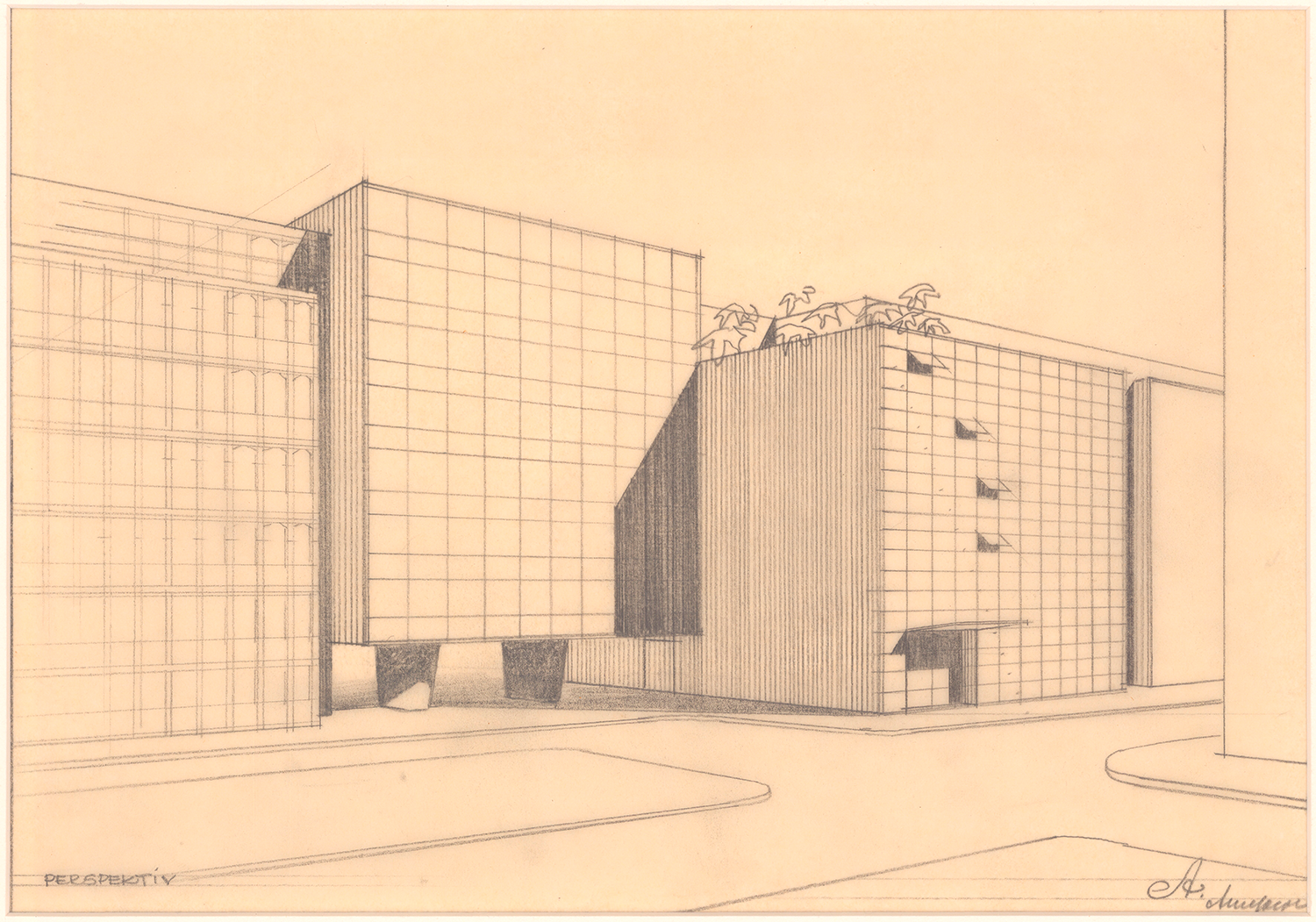
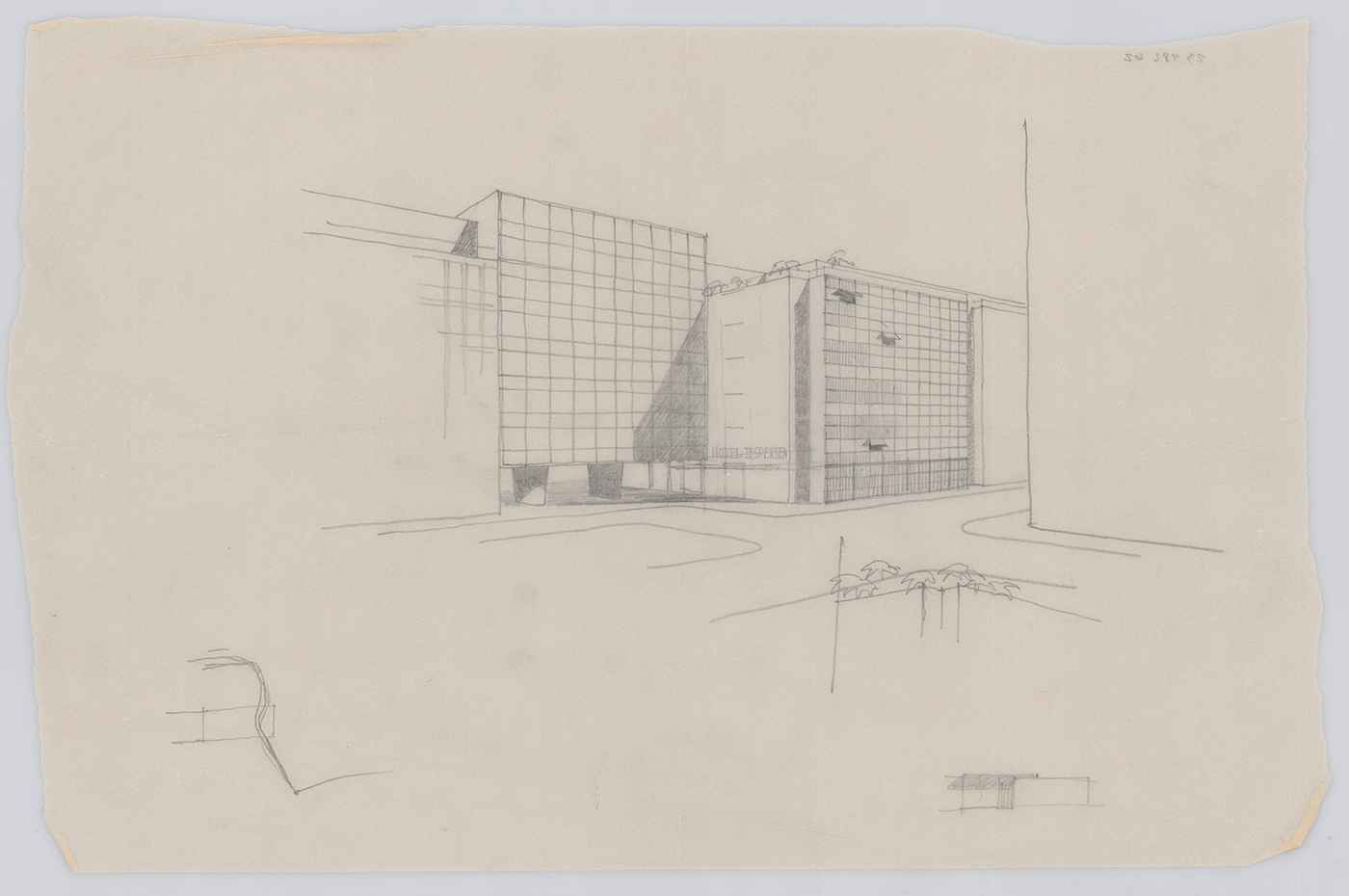
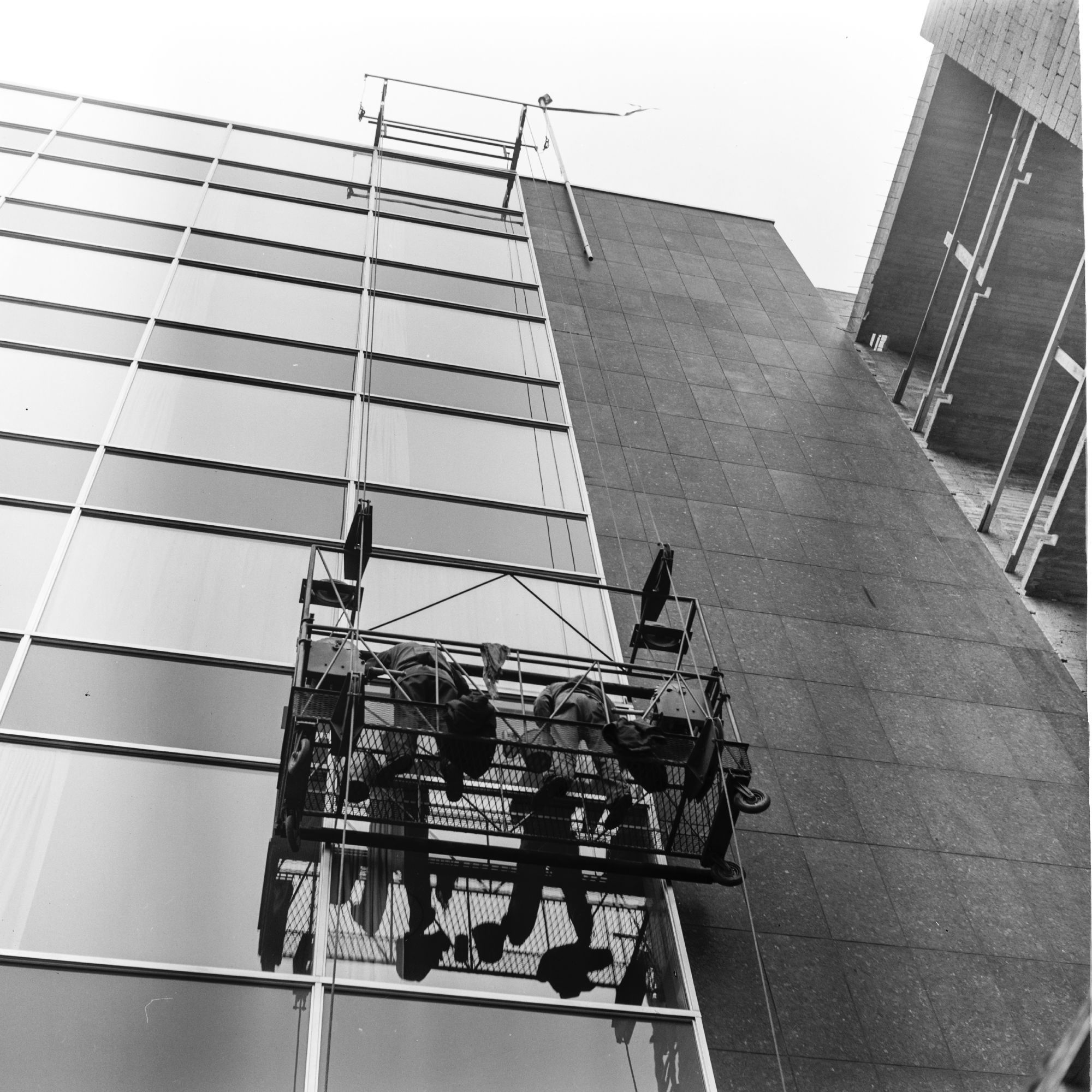
Arne Jacobsen’s A. Jespersen & Son office building next door, completed in 1955, is a highlight of that development boom. The first curtain wall in Denmark, the building is cantilevered over an alleyway to provide space for cars to reach the courtyard of the building behind it. While developing plans for the Jespersen & Son offices, Jacobsen also drew preliminary sketches for a Hotel Jesperson on the Textilarbejdernes Hus site, although I don’t believe there were serious plans to carry it out. Construction began on Rasmussen & Miland Petersen’s building soon after the opening of the Jespersen & Son office, but it looks like it was already in planning in 1953. The result is a low-key, complementary companion to Jacobsen’s.
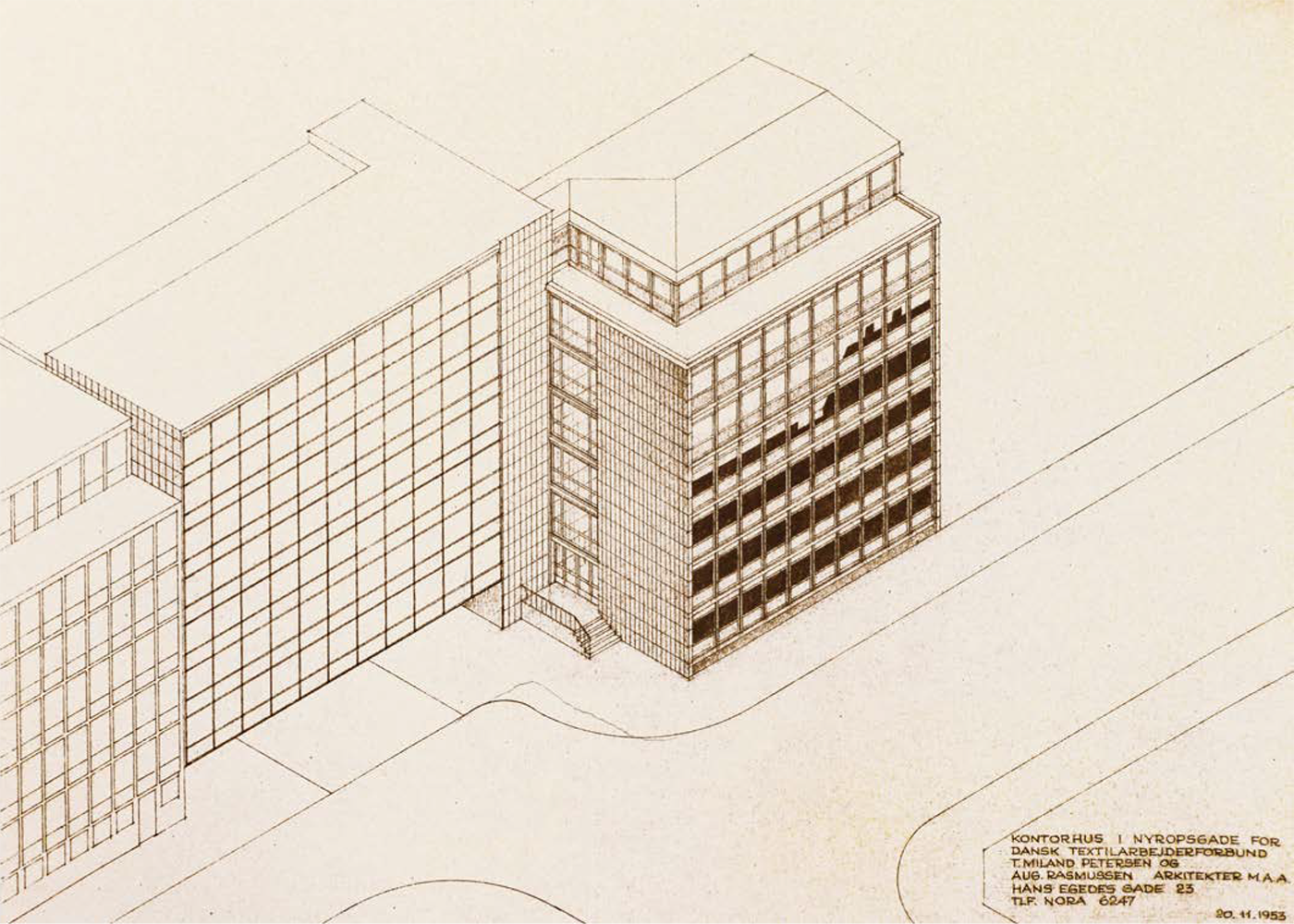
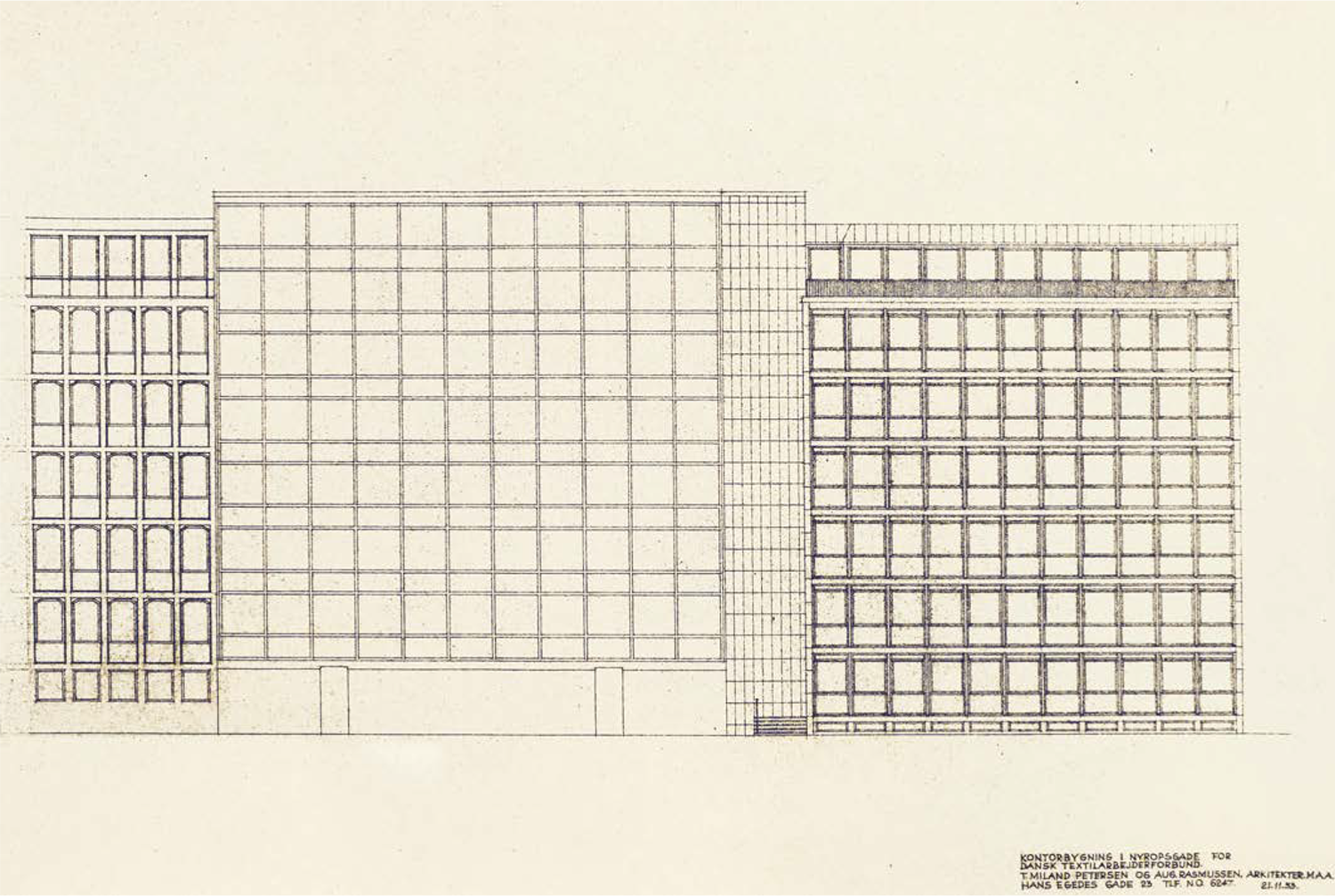
Designing a sleek modernist office building to serve as union headquarters fits nicely in Miland Petersen’s ideological trajectory–it makes for a pleasing throughline to his career that 20+ years after designing social housing projects with a socialist firm he was still taking on commissions with a political bent.
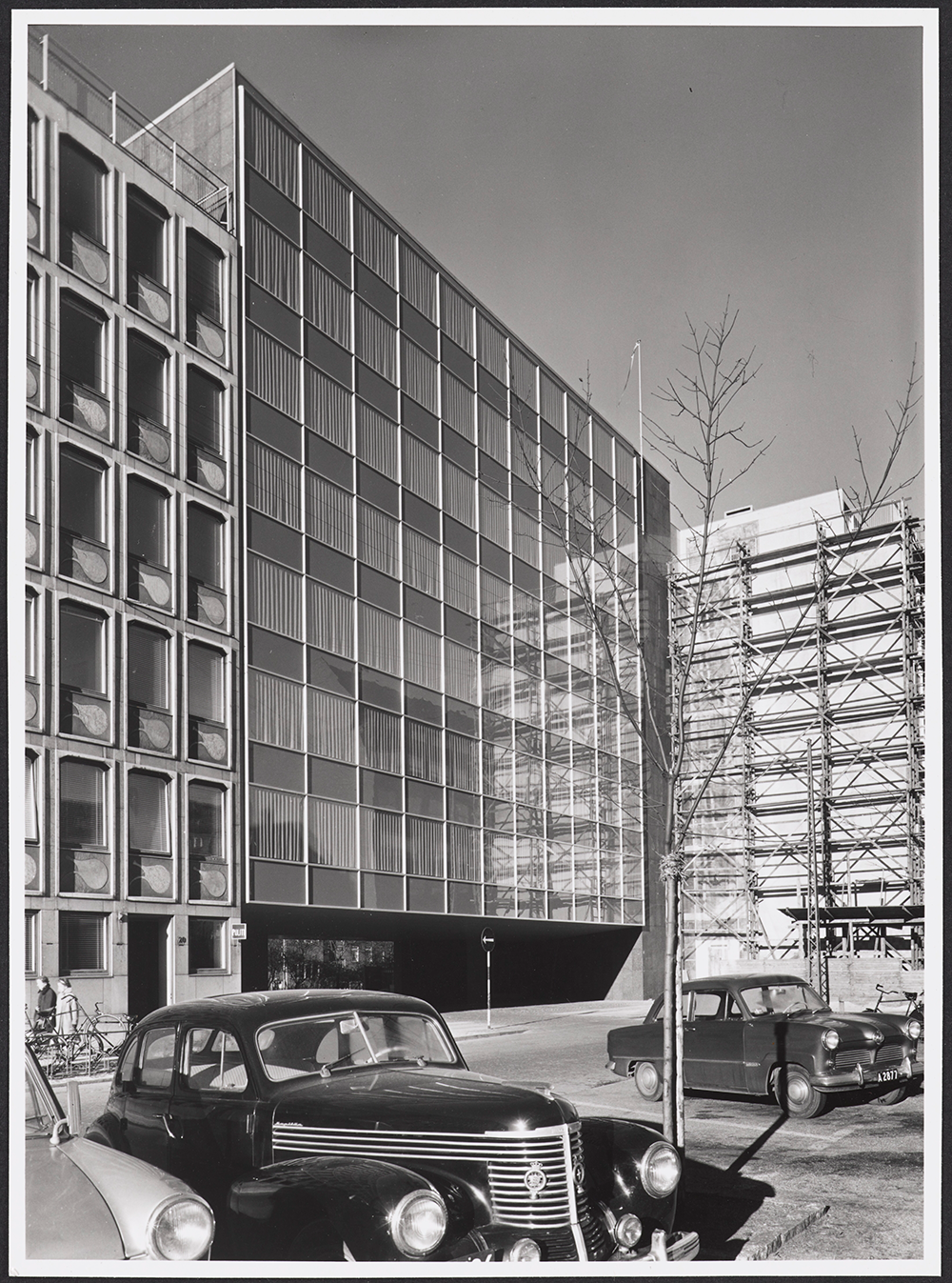
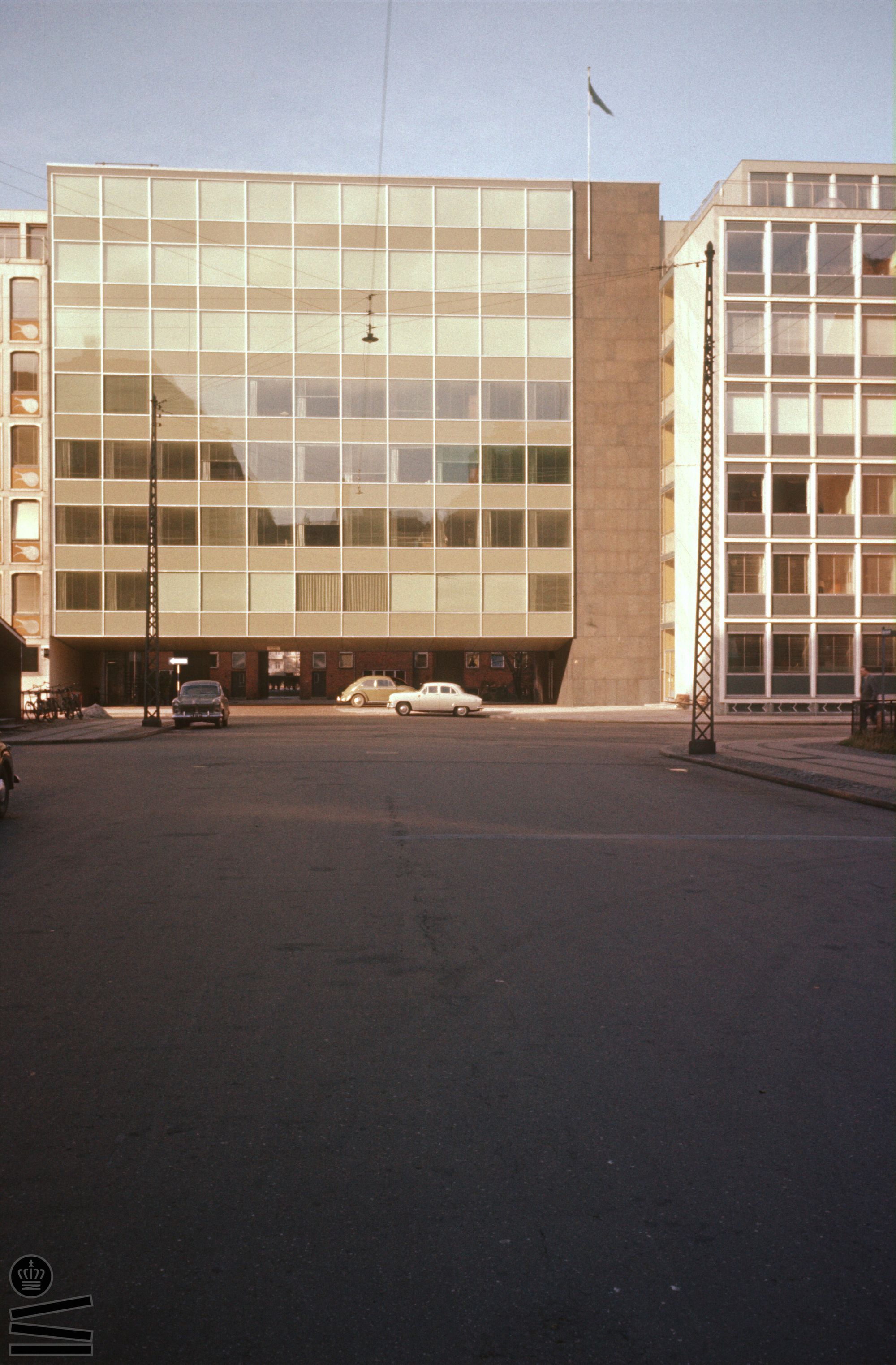
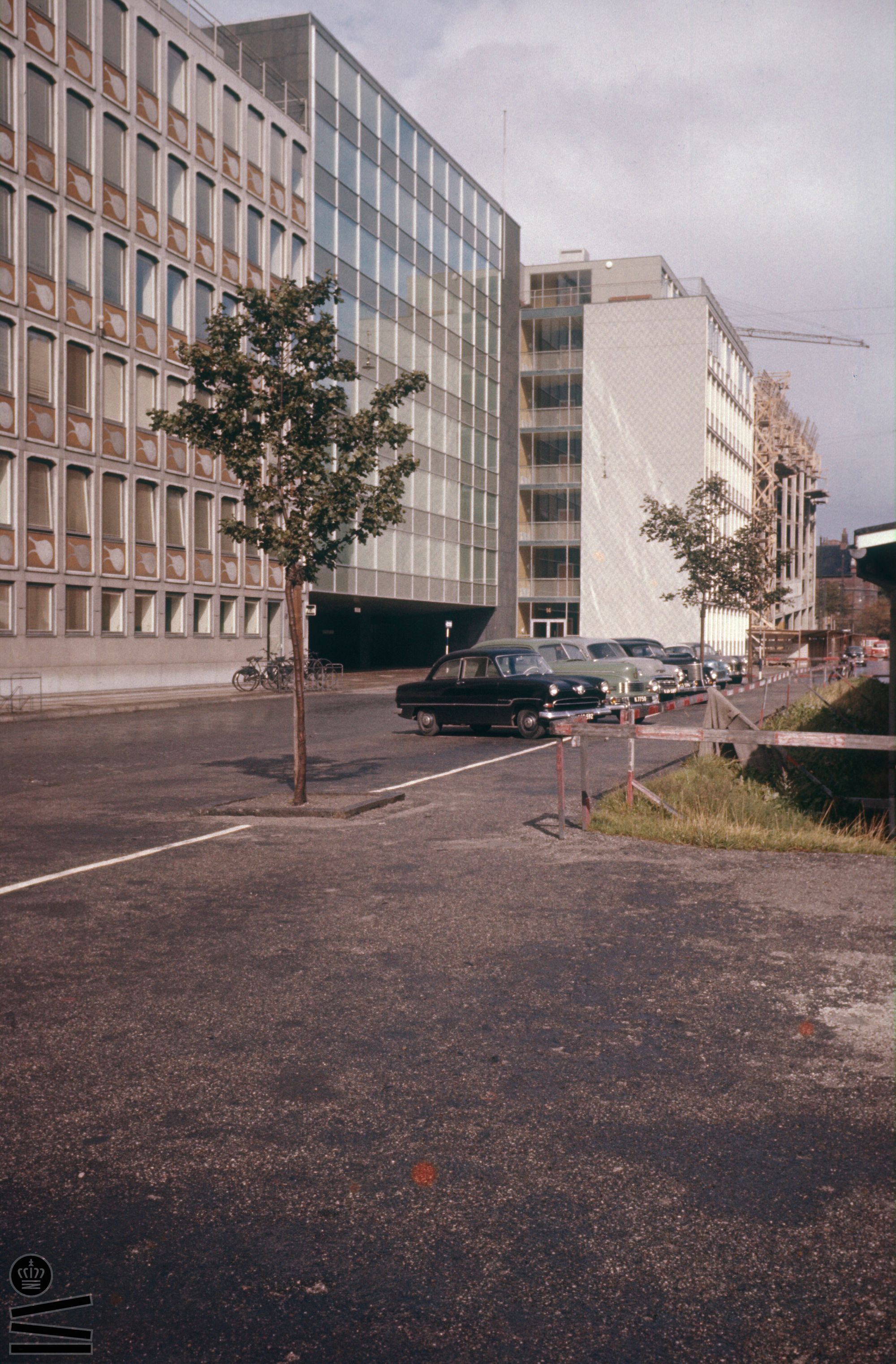
The Danish unions consolidated over time, and there’s no longer an independent textile workers union. Today the building is owned by 3F–Fagligt Fælles Forbund–the largest affiliate of the FH, the Fagbevægelsens Hovedorganisation. In 2015 three FH member unions moved their offices here, Dansk El Forbund (electricians’ union), Malerforbundet (painters’ union) and Blik & Rørarbejderforbundet (tin & plumbers’ union). When it opened, the Textilarbejdernes Hus projected an image of labor strength and modernity. 65 years later…still pretty modern, still pretty strong.
Production Files
Further reading:
- PDF – a really useful PhD dissertation focused on Arne Jacobsen (and with a big chunk on the A. Jespersen & Son office), but which helpfully touched on Rasmussen & Miland Petersen's building too
- A good read on the Jespersen & Son builing that also addresses how strange the neighborhood was before being developed after the war
- "Between passion and possession: women architects and the houses they built for family, love and work" – an interesting read that briefly addresses Torben Miland Petersen's work on the Atlas refrigerator factory
- The history of the Atlas factory in Lundtofte in Sjællandske Nyheder
- The conservation report from the Slots- og Kulturstyrelsen

Member discussion: